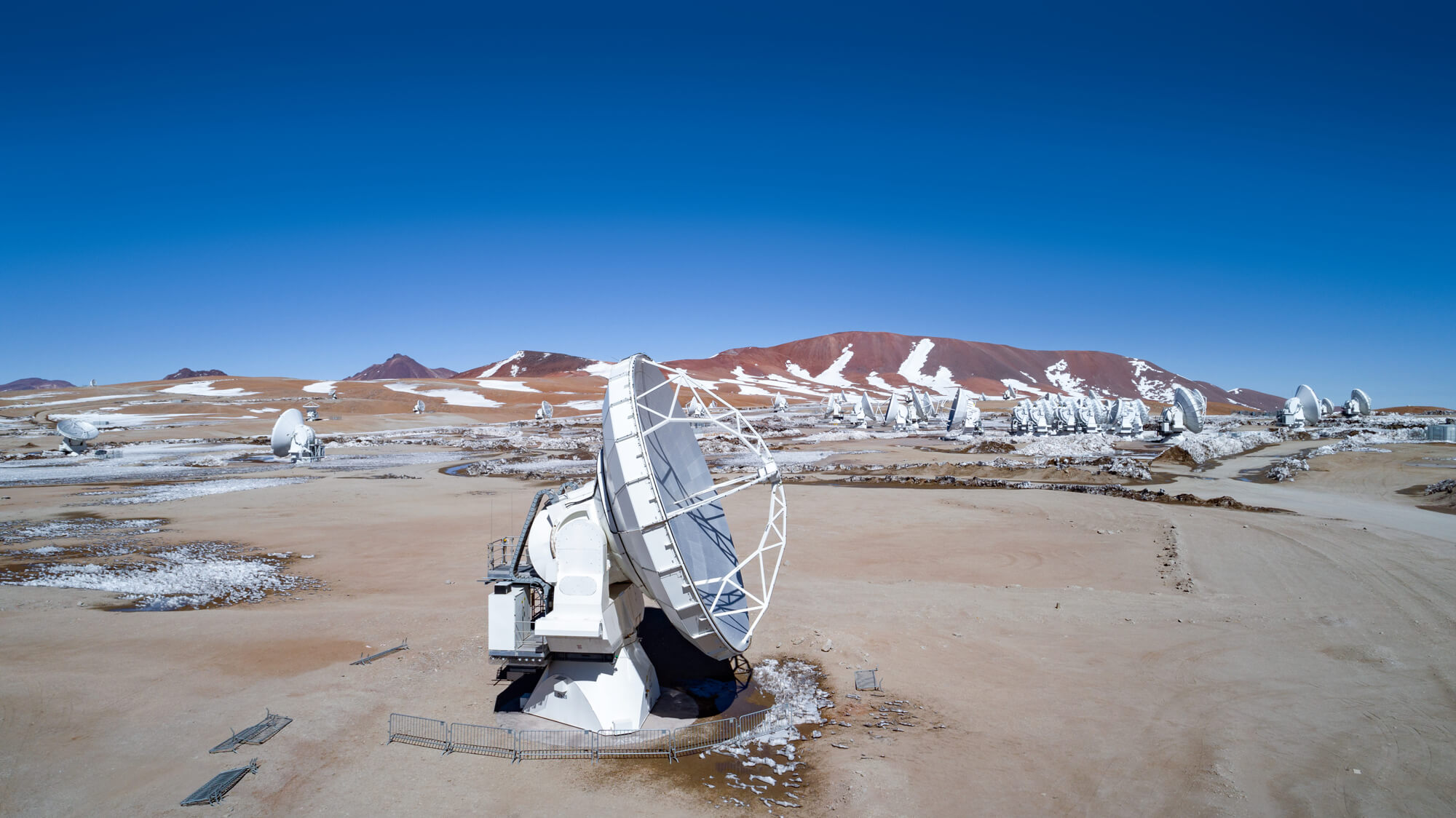| Status | Active |
| Launch | 2013 |
| Space organisation | ESO |
| Type | Microwave en far-infrared (0,3 – 9,6 mm) |
| Orbit | Atacama desert, Chili |
| Instrument with SRON contribution | Band 5 and Band 9 |

Dark ages
During the first billion years of the universe, the first stars slowly began to form. But because they were then still shrouded in dense clouds of hydrogen, they remain hidden from our view. This era is therefore known as the ‘dark ages’. After that, more and more stars formed and the first galaxies emerged, while the hydrogen nebula cleared.
Far-infrared
During its long journey through space and time, the light from those first stars was stretched by the expansion of the universe. As a result, the originally visible light changed into microwaves and far-infrared radiation when it arrived on Earth. With its 66 antenna dishes, ALMA captures a-by astronomical standards-large portion of that.
Young planetary systems
Closer to home, young planetary systems are an interesting target for ALMA. Unlike their visible light, their far-infrared light shines right through the surrounding dust clouds. ALMA thus photographs baby stars just being born and even dust disks around young stars in which planets-in-the-making gather mass like a snowball to develop into mature planets. ALMA offers an insight into the molecules involved in this birth process.

Virtual dish
ALMA was officially completed in 2013, but the first scientific observations date back to 2011. The 66 antenna dishes make up an area of six thousand square metres to capture enough radiation from the faint light sources astronomers want to study with it. They are spread over an area spanning 16 kilometres. Working together as an interferometer, they provide the same spatial resolution as a giant telescope 16 kilometres in diameter would have.
Band 5 and Band 9
Each antenna has 10 different wavelength regions, called ‘bands’. The NOVA-ALMA group has developed Band 5 and Band 9 in the SRON lab, for 1.42-1.84 mm and 0.42-0.50 mm, respectively. The detector technology is based on the HIFI instrument on board the Herschel satellite developed under the leadership of SRON.






